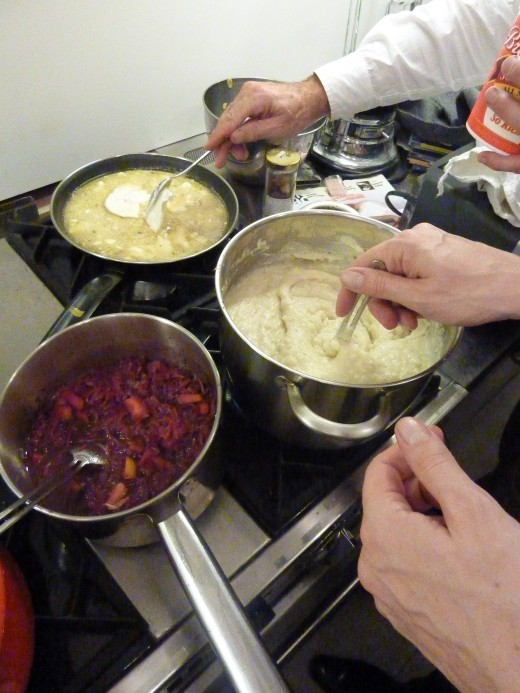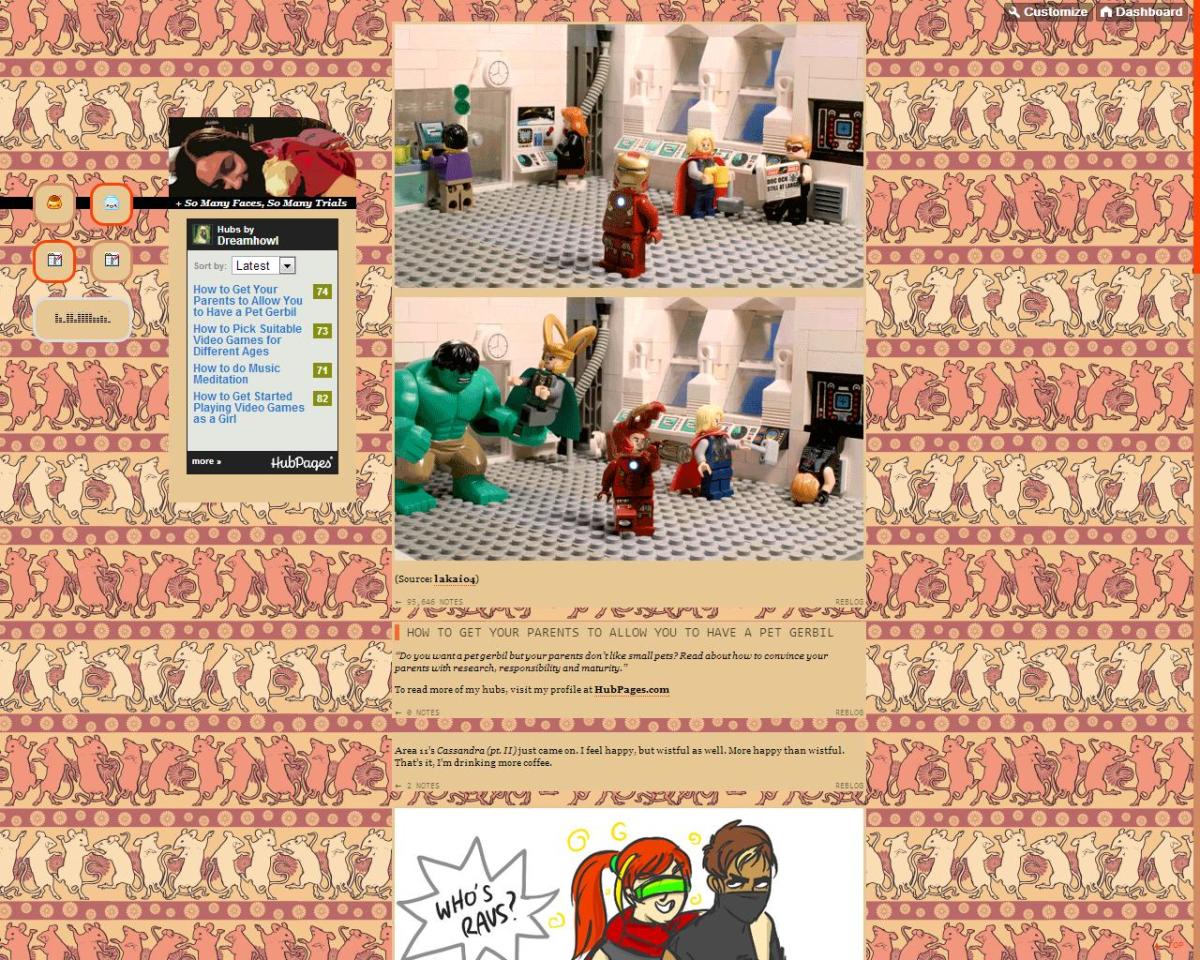Helpful Resources for Writing Your Food Blog

What is a Food Blog?
There are probably many definitions of what a food blog is and isn't. So, rather than trying to find out what everyone else has said what it is and what it isn't and then simply regurgitate the information, I'll just write what I feel a food blog is, how to get started writing one, and helpful links to spread the word if you already have one up and running.
The first thing to know about a food blog is - that the people who write them actually get in the kitchen and cook, or go to restaurants and order from the menu, or pick up take-out and bring it home to eat, or shop for new ingredients at the market, or tend their herb garden, or - well, see a theme here? It's all about food. Food blogs are all about food.
As with all writing, it is best to begin a food blog with writing about what you know. And if you don't know a whole lot about your subject, at least really like it. Food blogs are different than other blogs. The blogs themselves are mostly about food. That's not to say all food blogs must only have posts relating to food and cooking, it's just when readers come to a food blog, they expect to read a majority of the posts having a relationship to food.
Many blogs have a general theme to them, and just as many have a niche or specialty that they aim for. It could be baking, or BBQing, organic vegetables, baby foods, etc., but niche or specialty food blogs have one theme running through it. Whatever you want your blog to be, keep it consistent, and like what you do enough to keep at it.
Since readers like connecting with the writers who write the blog, it is common that most food blogs are photography based. People like images, and like to see how to put something together if they've never tried it before.
Speaking about images, do a search for 'food blogs' and you'll get a recurring layout through them all: They are generally uncluttered with simple and uncomplicated backgrounds. Avoid really flashy (and flashing) graphics and backgrounds. You want people to come and stay awhile at your blog, and take it all in - not run away screaming.
Where to Put Your Blog? How to Choose a Platform Service
There are many platforms that people use to get their own food blogs up for free. Some allow advertiser links and some do not. Some are strict about what content goes up, and some are more lax. Whichever method you choose for hosting your blog, choose one that will grow with you.
Other ways are to actually purchase a website name, and have the domain either point to the blog or host it yourself.
Here are five places to host your free food blog:
- Blogger.com - This platform is free, and will have the blogger name after the blog's name: for example "Myblog.blogspot.com". You can redirect a custom name to point to this blog. The advantage of using this service is that you may add your adsense advertising to the blog, and incorporate your Amazon affiliate account easily. The downside is that the templates all have the same look to them, and the content isn't yours - content could be deleted without warning if you are in violation.
- Wordpress.com - This platform is free, but they also have a paid version. The free version has the wordpress name after the blog's name, for example: "Myblog.wordpress.com". You can redirect a custom name to point to this blog. The advantage of this is that there are so many really great templates to use, and the dashboard makes it easy to see who visited your site, and full controls on all sorts of widgets for your site. The disadvantage is the free version has a very strict guideline on using ads: you can't use ads on your free wordpress blog. Getting a hosted wordpress blog means the site is yours, and you may load advertising.
- Weebly.com - Very simplified blogging platform. this one is free also. The weebly name would be after your blog's name, for example "Myblog.weebly.com". You may use your adsense account, and if you have items to sell, you can list them using your Google Checkout or Paypal business account. Disadvantages: while the drag-and-drop menu items for the page set ups are easy, the templates are very limited, and very limiting. Advantages: Easy to place in forms, pages and other elements.
- Webs.com - This is similar to Weebly, and is free. The Webs name would go after your blog's name, for example "Myblog.webs.com". Easy to add forms, and to add pages. This is also a nice platform for making it private to the public.
- Typepad.com (Micro Version) - This is probably the absolute basic, bare bones blog. You have very limited choices for backgrounds, and elements you can add to the blog. Typepad has a paid version where you have much more choices in backgrounds and other elements, but the micro version is free. The typepad and blog name would go after your blog's name, for example "Myblog.typepad.com/blog". Here, though, if you use Twitter a lot, you can match your twitter account to your blog.
Helpful Links About Food Blogging
- 5 Do's and 5 Don'ts About Food Blogging for Cookbook Authors
10 things to know about and do for your blog. Mainly geared for authors of cookbooks, but also great info for anyone interested in food writing. - Adobe Lightroom Tutorial (a.k.a. my dirty little secret)
A food blogger's tutorial for using Adobe to get the finished colors right.
Helpful Links About Content and Sharing
- Copyscape Plagiarism Checker
Copyscape is a free plagiarism checker. The software lets you detect duplicate content and check if your articles are original. - TinyURL.com - shorten that long URL into a tiny URL
Service that shortens a long URL. - bit.ly | Basic | a simple URL shortener
bit.ly, a simple url shortener.
Social Media for Getting the Word Out About Your Blog
- Foodbuzz - Foodbuzz
Your comprehensive source for food and dining information. Search restaurants worldwide. Find reviews, photos and videos. Get the latest food news, browse recipes, and more. - Facebook - Social Utility
Facebook is a social utility that connects people with friends and others who work, study and live around them. - Delicious - Bookmark Sharing Service
Keep, share, and discover the best of the Web using Delicious, the world's leading social bookmarking service. - Twitter - Social Utiltiy
Use twitter to share your latest links, current recipes, and what is inside your kitchen now. - Digg - The Latest and The Best on the Web Through Votes
The best news, videos and pictures on the web as voted on by the Digg community. - Cloud Hiker
Cloud Hiker showcases new and interesting sites.
Books on Food Blogs
© 2011 Ruby McGreggor









